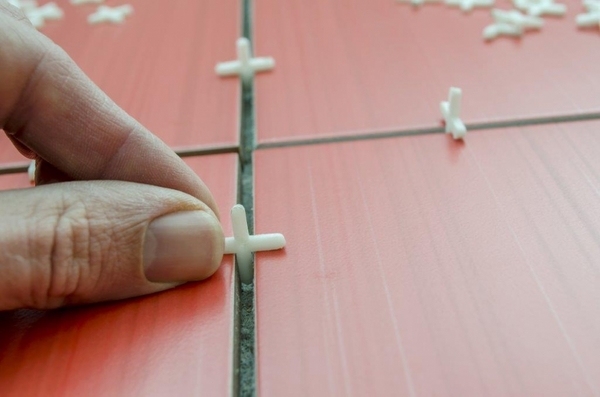Sanded vs unsanded grout – what do you need to know? What is the difference between sanded grout and unsanded grout? How to choose the right type? It is quite natural that once you have chosen the tile for your kitchen backsplash or bathroom you will face the question about grouting.
What is grout? This is the colored mortar between the tiles which helps holding them in place and seals the space between them. In addition to the practical function, that mortar has a decorative function as it is a frame around the tiles and can complement their color or create a visual contrast. Grout comes in a wide range of colors and there are different types of grout. When you have to choose between an epoxy grout, furan grout, other types of grout, grout sealants, the numerous colors, finishes, properties, it becomes a complex task and people get confused.
Sanded vs unsanded grout – what is the difference?
Sanded vs unsanded grout – what is the difference, which one is better, where and how to apply them? Before all, choosing the type will strongly depend on the style of your tiles, the tile color, the water resistant properties of the grout, etc.
Sanded grout is a cement-based grout, containing silica sand, which is literally added to the mix in order to provide additional strength to the grout joints. It is the sand that creates a strong bond within the grout mixture and makes it resistant to cracking and shrinking. Sanded grout adds to the slip resistance of the flooring in wet areas as well.
Unsanded or non-sanded mortar, has a smooth texture, it is a cement-based mortar and does not contain an addition of sand.
Sanded vs unsanded mortar – how to use them?
The decision which type of mortar is suitable for your home should be based on the particular area of application.
Sanded grouts are recommended for larger joints and tile installations with grout lines wider than 1/8 inch as they are strong and will not crack. The coarser texture may be a bit difficult to clean and maintain, though. Can you apply sanded grout on thinner tile joints? Yes, but you should keep in mind that it could be difficult to force the sandy mixture into tight joints. Sanded grouts – this is an excellent choice for natural stone, marble tiles, glass and other heavier tile materials.
Unsanded (non-sanded) grout is recommended for smaller narrow joints which have a spacing less than 1⁄8 inch wide. You could use it to fill larger joints, but there is a possibility that it will crack due to the lack of bonding that the sand provides. Unsanded grout is easier to work on vertical surfaces because of its “sticky” property and the solidity of the mixture. Unsanded mortar can be used for ceramic tiles, glass tiles or highly polished surfaces as it is unlikely to scratch the surface.















